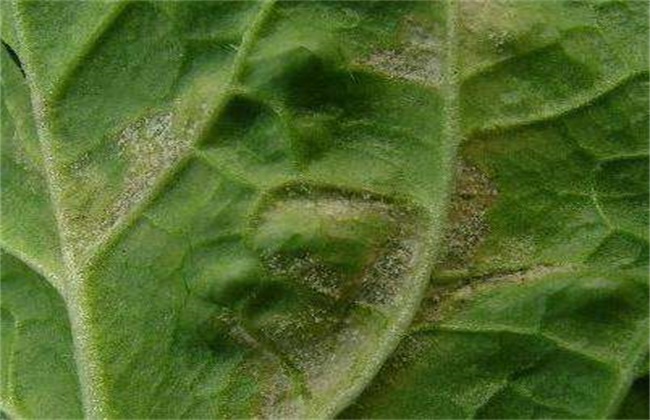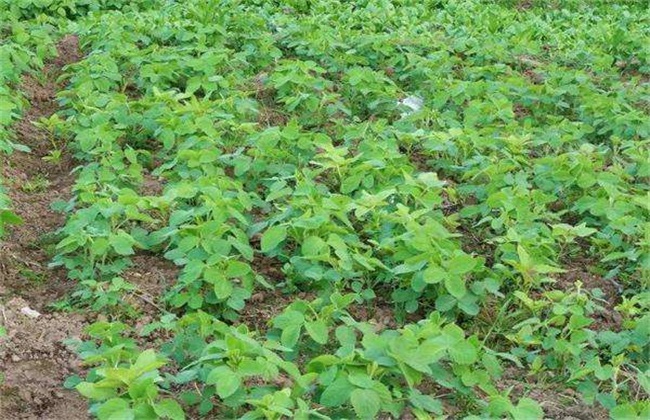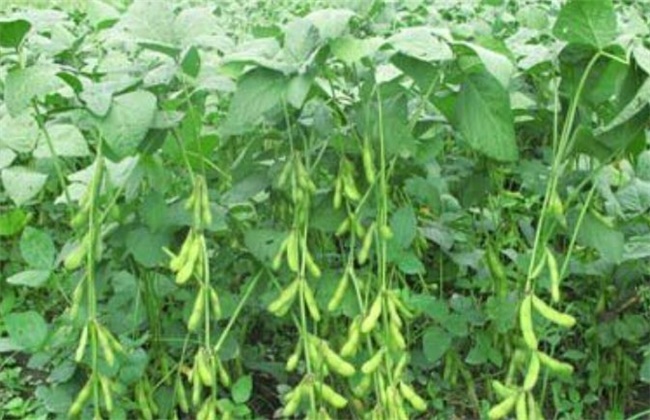Control measures of soybean downy mildew
Soybean is an important food crop in China, and downy mildew is a common disease in planting, which is widely distributed all over the world, especially in high humidity areas. It will cause a serious reduction in production and cause huge losses to farmers, so how to prevent soybean downy mildew? Let's get to know it.

1. Symptoms
Downy mildew mainly harms the seedlings, leaves and seeds of soybean, in which the incidence of seeds is high. Sowing with diseased seeds will infect the seedlings. After the disease, the first true leaf will appear at the base of the petiole. As the disease extends to the whole leaf, the leaf yellowing, and the back will appear every time, this is the sporangium of the pathogen. Climate change will also have a certain impact on the development of the disease, the humid climate will aggravate the development of the disease, the mildew layer is also relatively thick, when the disease is serious, the seedlings can not be set up, the initial death will occur; when the climate is dry, the disease will be delayed, there may be no mildew layer.
2. The law of propagation
The pathogen survives in diseased grains and tissues, and after safe overwintering, it will produce zoospores, invade the seedlings, and gradually cause harm to true leaves and axillary buds with the increase of soybean growth hyphae. The damage rate of seedlings is affected by temperature one. When the temperature is lower than 13 degrees, the incidence rate is about 40%, while when the temperature is higher than 18 degrees, the disease will not occur. After the disease, there are large sporangia in the seedlings, which spread to other plants by wind and rain, causing disease in the leaves of other plants. after the leaves fall, the sporangia infect the epidermis, grow in the intercellular space, and the hyphae continue to increase. When the fungus invades the inside of the plant, a faded green spot will appear, and sporangia will be formed in about a week, which will continue to expand the scope of invasion. Light also had a great effect on sporangium germination, the longer the light time, the faster the germination, and the shorter the light time, the slower the germination. In wet and rainy years, the onset of downy mildew is more serious, which usually begins in the middle and last ten days of June and reaches its peak from July to August.
3. prevention and control measures
Downy mildew is parasitic, so it is necessary to cultivate varieties with strong disease resistance and screen seeds before sowing, so as to reduce the incidence, screen some diseases and avoid infection of their seedlings. It is best to select seeds on a disease-free day, and seed dressing can also be used to avoid bacterial infection. When the disease occurs, it is necessary to apply chemicals to propagate in time. The commonly used agents with better effects are 65% Dysen zinc wettable powder 500 times liquid and 50% bacilli special wettable powder 800 times liquid, etc., and the agents should be sprayed evenly. At the same time, avoiding continuous cropping, reasonable rotation, increasing application of phosphorus and potassium fertilizer and timely elimination of stagnant water can also help to alleviate the incidence of downy mildew.
The above is the introduction of soybean downy mildew prevention and control measures, hope to help you, want to know more related knowledge, please pay attention to us.
Related
- The first cup of black tea in spring, the flavor and history of tea gardens in Kenya, Africa
- The computer can not only choose potatoes, but also grow tea rice. AI will grow winter oolong tea champion.
- It is not only the inflated tea bitten by insects, but also engraved with the four seasons tea in Beipu.
- The Oriental Beauty Tea Festival in Zhuxian County takes the stage at the weekend to experience the plus-size feast of oil tea.
- & quot; Oriental Beauty Tea & Exploration of Emei in Hsinchu, the hometown of quot;
- The new variety of strawberry "Tainong 1" dessert is the first choice with mellow aroma. Crimson gorgeous
- History of Tea in Taiwan: from Wild Inner Mountain to Export Tea Garden
- Two types of Taiwan Oriental Beauty Black Tea won the British three-Star Award for Childhood Tea Xiang Zhang Jiaqi changed from pilot to champion tea maker.
- Banana species and varieties: the planting history of Taiwan Xianren banana and dwarf banana is long, is banana disease resistant?
- Coffee planting Technology: Qianjie Coffee from Seedling to harvesting



